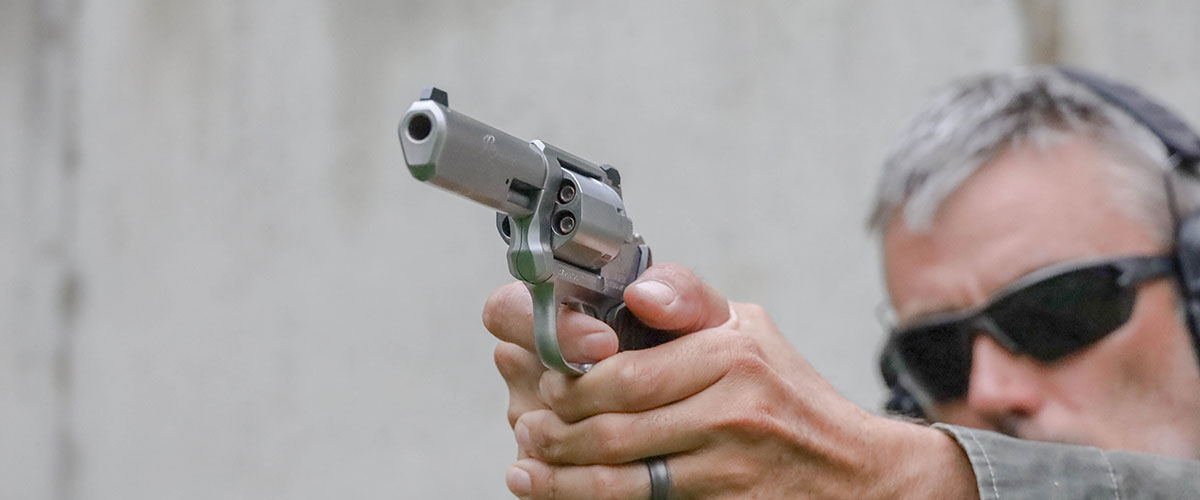
In terms of general popularity, revolvers ruled the roost in America for a long time. For most of the twentieth century, law enforcement agencies relied upon revolvers as their primary sidearm, and iconic movie characters like “Dirty” Harry Callahan increased the appeal of big bore wheelguns. However, semi-automatic pistols became more popular in the 1980s, in large part because of Gaston Glock and his polymer-frame striker-fired pistols. Today’s semi-autos are reliable and offer substantially more capacity than revolvers. Semi-autos are also generally easier to conceal than revolvers, making them the most common choice for daily carry.
Does this mean the revolver’s time has passed? I don’t think so. There are practical reasons why revolvers loaded with the right ammunition remain appealing even in the face of modern semi-auto pistols.
Why Revolvers Work
For starters, revolvers are simple to operate. You could make the argument that semi-autos are also relatively simple, but new shooters are drawn to the ease of operation of wheelguns. With a revolver you simply press a button to release the cylinder from the frame, manually load the rounds, and lock the cylinder back in place. With double-action revolvers you simply pull the trigger and fire. Aside from the cylinder release, there are few controls to master, and revolvers are extremely simple to operate and maintain. If you’re new to firearms and feel intimidated by the mechanics of a semi-auto, then a revolver is right for you.
When I was a kid, I remember many shooters decried semi-autos as being unreliable, and I don’t doubt that there’s some truth to the notion that today’s semi-autos are more reliable than many from 30 or 40 years ago. I also believe semi-autos get a bad rap because shooters feed them low-quality ammunition or don’t clean their guns, but revolvers aren’t as finicky with ammunition as autoloaders.
Choosing Ammunition
Speaking of ammunition, some revolvers will handle different loads which offers far more versatility than you’ll get with the average autoloader. The most common example is 357 Magnum revolvers that effectively shoot 38 Special and 38 Special +P loads. I have a Ruger SP101 in 357 Magnum I sometimes use as a trail gun, and that revolver certainly packs a punch with full-power 357 ammo. However, when loaded with.38 Special ammunition that gun produces far less recoil and muzzle blast, making it suitable for new shooters. I also run 44 Special ammunition in my 44 Magnum hunting revolver for a low-recoil practice round, and revolver chambered in 327 Federal (one of the most underrated self-defense rounds of our time) can also handle milder 32 H&R Magnum loads, which is a superb option for anyone who wants a low-recoil revolver round for self-defense.
Because they lack a slide that must move rearward and forward to cycle the firearm revolvers also add another layer of reliability. SWAT teams in a large U.S. city switched from their standard 1911 45s to Smith & Wesson R8 357 Magnum revolvers to prevent the slides from their semi-autos contacting ballistic shields under recoil and jamming the pistol. If you’re carrying in a coat pocket and have to fire your gun through clothing at an attacker at close range, the slide of a semi-auto runs the risk of jamming as it contacts clothing, but that’s not an issue with a revolver. These are both niche examples, but they do show that revolvers have some real-world advantages in terms of reliability. Revolvers can fail, but on average they are easy to operate and maintain and are a good option for defense.

Large frame revolvers are designed to house powerful magnum cartridges like the 44 Magnum, 454 Casull, 480 Ruger, and others and are therefore a solid option for defense in bear country. Very few revolvers generate energy levels on-par with large centerfire rifles, but large magnum revolvers do generate muzzle energies that are substantially higher than common semi-auto rounds. For example, a 10mm Auto cartridge produces in the neighborhood of 650 foot-pounds of energy. A 44 Magnum generates close to 1,000 foot-pounds of energy, and a 454 Casull revolver produces about three times as much punch at the muzzle as a 10mm Auto. Sheer power doesn’t stop big bears, but a well-placed shot with a big bore revolver certainly carries more energy than you’ll get from the average autoloader. Revolvers are also the natural choice for hunting big game.
Revolver Cartridge Selection
Proper cartridge selection is crucial for any firearm, and while revolvers function reliably with a wide range of ammunition, you’ll have a far better experience with quality ammo.
You’ll want a solid stash of target ammunition such as Lawman for days on the range. For self-defense I use Speer’s Gold Dot Short Barrel 135-grain 357 Magnum load, which is designed for use in compact revolvers like mine. If you want something bigger for bear protection a 44 Magnum revolver with a 4-inch barrel is a great option.
Selecting the right ammunition will make your revolver more accurate and will help you tune it to the intended purpose. But you must make sure that you’re choosing a quality load from a trusted brand. Quality revolvers are reliable, durable machines that will digest a wide range of ammunition, but you won’t get the most out of your wheelgun unless you use the right ammo.